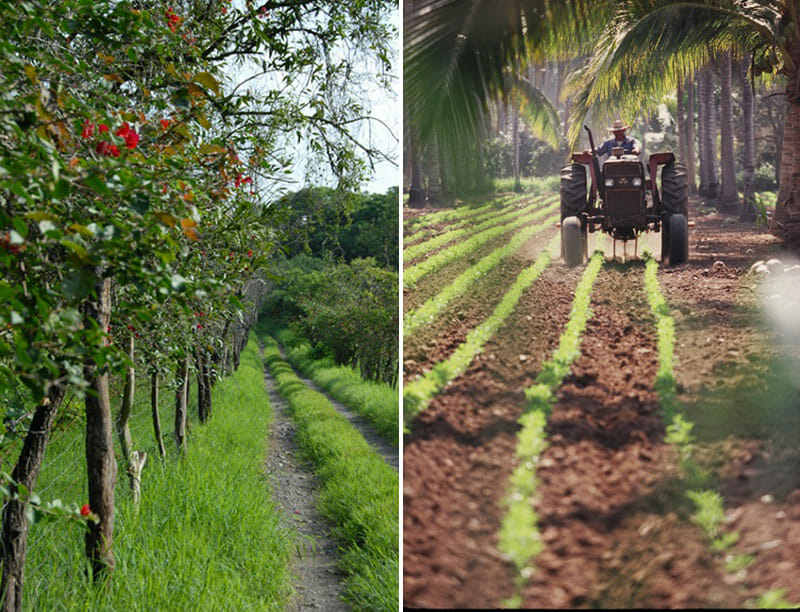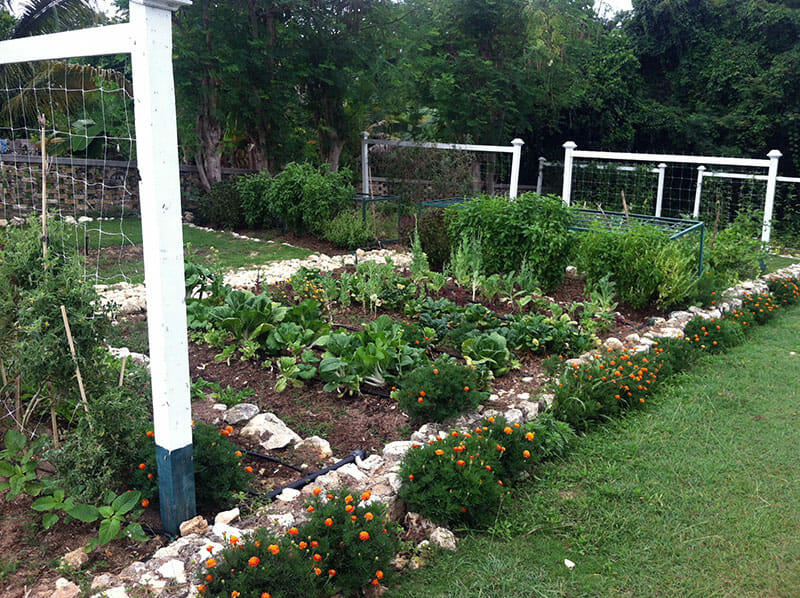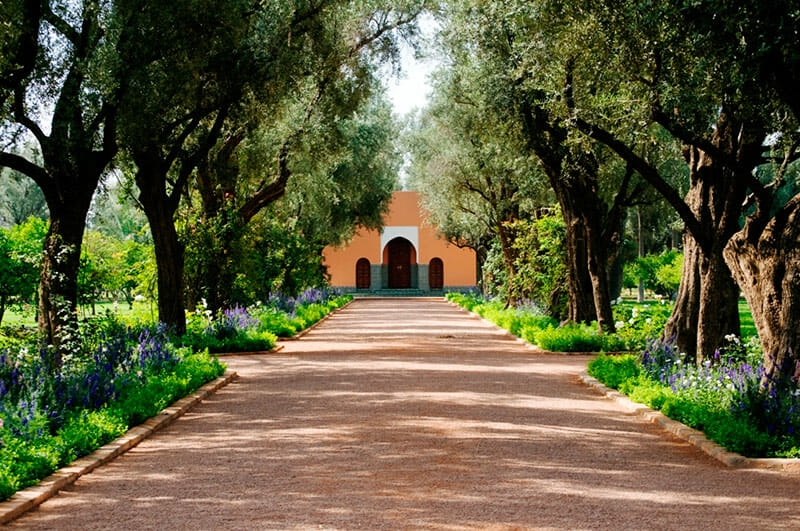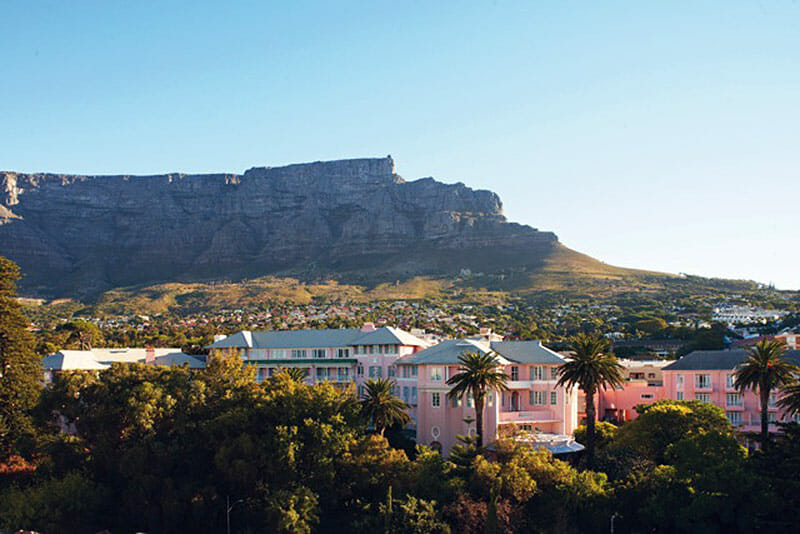While many travelers are trying to get away from it all ”“ work, kids, parents, seemingly neverending battles with telecommunications companies ”“ some hoteliers are using that as an opportunity to offer them a chance to get back to the land.
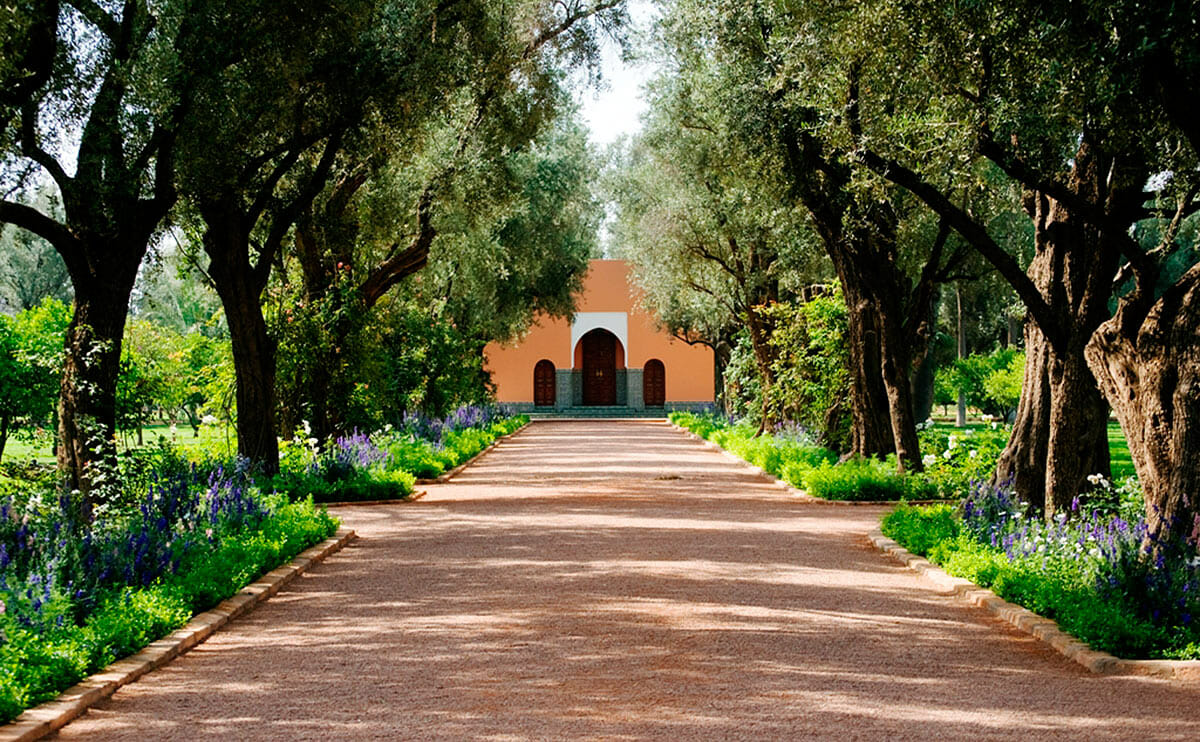
[mf_h5 align=”left” transform=”uppercase”]Hacienda de San Antonio, Mexico[/mf_h5]
At Hacienda de San Antonio, a few hours inland of Puerto Vallarta, guests are encouraged to tour the farming facilities, and even eat a meal in the middle of the vegetable garden, shielded from the hot Mexican sun by a simple tarpaulin. (If you’re lucky, owner Goffredo Marcaccini will join you, composing a superb salad of fresh Bibb lettuce, baby carrots, radishes and sugar beets and offering a short, charming lecture on the importance of salt and pepper to a salad.) The organic farm boasts dozens of varieties of fruits and vegetables, and, not far, the free-range ducks and chickens happily toddle around a generous enclosure. The farm at the Hacienda also harvests and roasts superb high-altitude, volcanic-soil Arabica coffee and produces 19 types of cheeses and yogurts. The gouda, asiago, manchego, Oaxaca and chevre varieties were heavenly when paired with raisin toast, and when eaten while sitting among wildflowers and wild horses at the foot of a dormant volcano.
[mf_h5 align=”left” transform=”uppercase”]Round Hill Hotel & Villas, Jamaica[/mf_h5]
At Round Hill, an oasis of oceanfront (and Ralph Lauren-designed) guest rooms near Montego Bay, much of the food comes from the property’s hilltop organic farm. Inspired by panoramic views of turquoise waters and icing sugar sand, you can spend some time strolling around and shoving everything green – from spearmint and rosemary to sorghum and peppermint – into your mouth. “I’m a farmer; I never have to go to the doctor,” said our tour guide, proudly. (He did, indeed, have an enviable waistline.) Round Hill has a “farm-to-table” program, which showcases homegrown herbs, vegetables and meats. Instead of depending on imports, Chef Martin Maginley is sourcing local fare to produce dishes like guava-glazed slow-roasted rosemary pork loin and spicy scotch bonnet ice cream. The new See, Touch, Taste program allows guests to roll up their sleeves and pick the vegetables for their next meal. (By the way, you haven’t really had a Mojito until you’ve had one made with the mint you just plucked out of the ground.)
[mf_h5 align=”left” transform=”uppercase”]La Mamounia, Morocco[/mf_h5]
At La Mamounia, an elegant property on the edge of the walls of the old city of Marrakech, you can wander out the back door, and play a round of boules in the middle of the orange grove. La Mamounia is named after its legendary 200-year-old gardens – originally given as an 18th century wedding gift among royals – and the lush property remains the focus of the storied hotel. The hotel first opened its doors in 1923 and has long been a playground for an international elite; it’s easy to picture Winston Churchill strolling the grounds with a lightly chilled glass of Pastis, perhaps stopping to smell the orange blossoms. Today, the gardens include various species of tomatoes, green and yellow zucchini, carrots, radishes, lettuce and herbs, such as lemongrass, mint, violet and basil, many of which are incorporated into the hotel’s Moroccan, French and Italian dishes.
[mf_h5 align=”left” transform=”uppercase”]Mount Nelson Hotel, South Africa[/mf_h5]
In just a few short years, the previously down-market idea of “foraging” has been elevated to the province of conscientious chefs happy to spend their weekends pulling wild ramps out of the ground. Cape Town’s Mount Nelson Hotel, a charming collection of soft pink cottages and suites, offers guests the opportunity to forage for their own food, including edible plants, weeds, mushrooms, shellfish and seaweeds – all found within close proximity to the hotel. With the assistance of an “urban forager,” visitors can hit the Atlantic coast for black mussels and alikreukel, the Mountain Forests for mushrooms and nuts, and the slopes of Devil’s Peak to collect fennel, sorrel and nettles. Guests are then invited back to the kitchens of the Mount Nelson to prepare their findings – ideally before the sun starts to set on Table Mountain.
(Editor’s note: This story was the product of a press trip, and the writer had her airfare, meals and lodging paid for by hotels covered in this article. We only learned this fact after publication. Modern Farmer regrets any conflict of interest (or appearance of conflict) — our policy is that authors on assignment should not receive any compensation from the sources they cover.)
